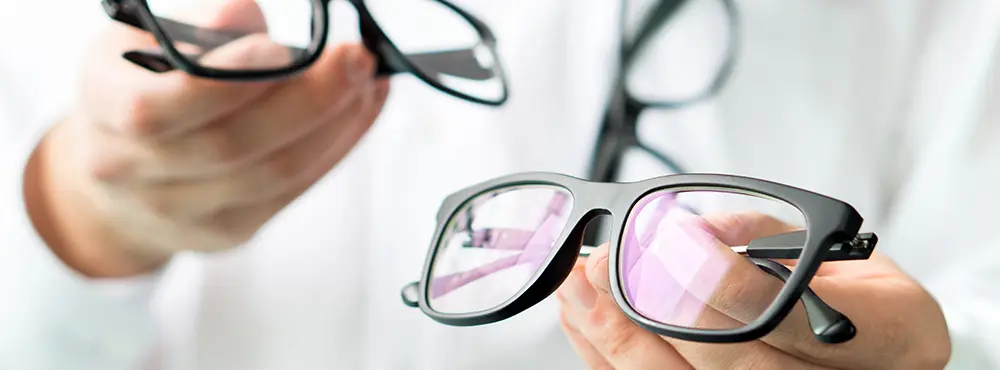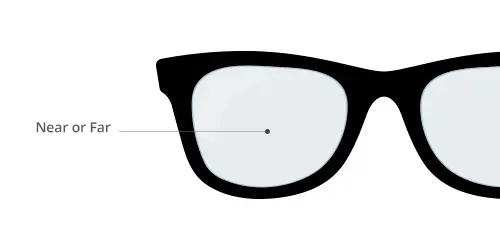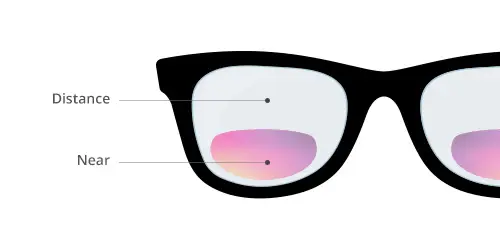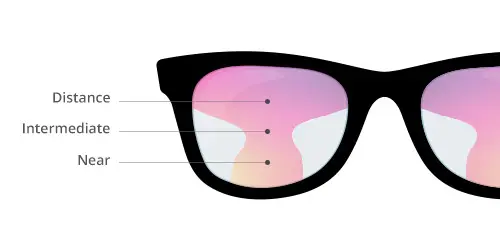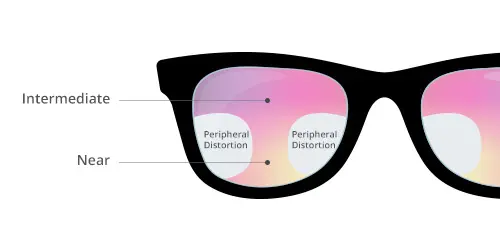Our glasses lens options accommodate a range of vision types to ensure the right lenses for you. No matter what your prescription or job role, we have a variety of lens options to suit a range of lifestyles.
To find the perfect lens package for you, you must choose the correct lens option for your vision type first. To best understand which lenses are best for you, read our guide below.
Single vision lenses are designed to correct your vision and can help you to see things that are far away (distance when driving/reading a board etc), that are nearer (reading/writing) or at an arm's length (computer or anything in your intermediate vision).
Single vision lenses are typically used to correct short-sightedness (myopia), long-sightedness (hyperopia) and astigmatism. These lens option features one power across the lens.
Bifocal lenses contain two different prescriptions within the lens. They are designed to help you see objects both near and far away.
You will notice a visible line on these lenses. This marks the separation between the distant and reading sections of the glasses.
The upper portion of the lens is used for distance vision, as you naturally look up and around you. When reading something close, you generally tend to look downward; hence, the lower part is used for reading/ near vision.
Multifocal glasses are commonly prescribed for those above the ages of 40. People of this age are more likely to have lost their ability to focus well due to presbyopia.
Varifocal/progressive/multifocal lenses
Varifocal lenses offer a smooth line of vision for objects near, far and everything in-between. They are also referred to as progressive lenses or multifocal lenses. They feature three parts to look through.
Long-distance vision is aided through the top portion of the lens. The middle part helps with intermediate distance and the bottom part helps with seeing objects close up. Varifocal lenses offer a wide field of vision and smooth visual transition and are best for people who require a switch between distances throughout the day. Some varifocal lenses can offer a wider field of vision.
Occupational lenses are designed for jobs or tasks that require you to do close up work. They are sometimes referred to as ‘enhanced reading glasses’ and are an excellent choice for those who spend a lot of time on the computer and require both intermediate and reading vision.
Occupational glasses bridge the gap between varifocals and reading glasses. They feature wider viewing zones than standard varifocal lenses and unlike reading glasses will provide you with both close up and intermediate vision.
These lenses are particularly useful for older presbyopes who need to see clearly at intermediate distances. They are also a convenient option for professions where people are required to look across a room but also need to see close up. Hairdressers, teachers, musicians, receptionists, optometrist and doctors are examples of people who may benefit from occupational lenses.
An aspheric lens for glasses is flatter and thinner in design. Standard lenses have a spherical front surface, which means they have the same curvature across the entire lens (i.e. football/tennis ball). With an aspheric lens, the curvature will change gradually from the centre to the edge of the lenses.
These lenses are recommended, especially for high or strong prescriptions and suitable for myopia (short-sightedness) and hyperopia (long-sightedness). Aspheric lenses are generally more expensive because of their premium lens design and added benefits, making them a great investment.
Made with “high-index lens” materials, they produce a slimmer profile that is also lighter than standard lenses. Due to its flatter curvature, aspheric lenses will be closer to your eyes.
Prescription glasses wearers will have a more natural look and view, as unwanted magnification and minification will be reduced. This is because standard lenses for myopia will make objects look smaller, and the wearer’s eyes will appear small.
Whilst standard lenses for hyperopia will make things look larger and closer than they are. As a result, the wearer’s eyes will appear bigger. Aspheric lenses are also more comfortable due to their lightweight, making them easier to wear as well as more cosmetically appealing. In addition to this, they will reduce aberrations, giving you clearer vision.
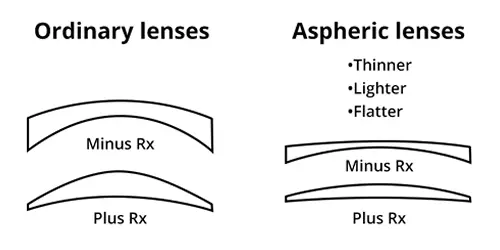

 Offers
Offers Account
Account
 Favorite
Favorite
 Basket
Basket

 OFFERS
OFFERS










